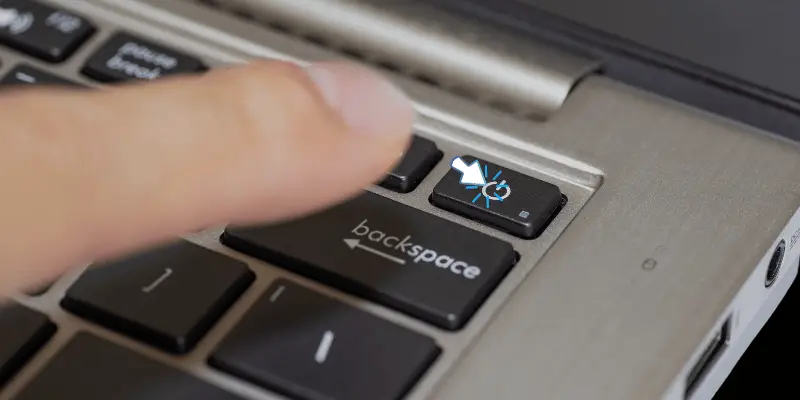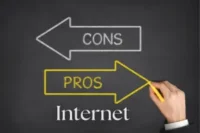Why Won’t My Laptop Turn On? Quick Fixes You Need to Try!
Published: 17 Mar 2025
You have an important meeting, an urgent task, or maybe want to watch your favorite show—and unexpectedly, your laptop isn’t turning on. Isn’t it annoying? This occurs to so many people, and the most painful part is that you have no idea what’s wrong. But don’t worry! Whether it’s a basic battery problem or a more serious issue, we’ve got you covered. Let’s study further to discover why your laptop is not turning on and how you can fix it fast.
Common Causes of Laptop Not Turning On
When a laptop doesn’t power on, the issue could be related to power supply, hardware, or software failures. Understanding these causes will help you diagnose the problem and find the right fix.
Some of the most common reasons include:
1. Power supply failure – A faulty charger, damaged power cable, or dead battery can prevent the laptop from turning on.
2. Loose or damaged RAM – If the RAM is not properly seated, the laptop might fail to boot.
3. Corrupted system files – If Windows or your operating system is corrupted, the laptop may turn on but fail to load.
4. Overheating issues – Dust buildup or a malfunctioning cooling fan can cause the laptop to shut down.
5. Hardware failure – A faulty motherboard, damaged storage drive, or broken power button may prevent startup.
6. Screen/display issues – The laptop may power on, but a black or blank screen could make it seem unresponsive.
Now, let’s dive deeper into each cause and how to fix them.

1. Power and Battery Issues
If your laptop won’t switch on, first check the power source. Ensure that the charger is fully plugged in and try a different wall socket. Check the power adapter and cable for damage. If available, use another suitable charger.
For laptops with removable batteries, remove the battery, press the power button for 30 seconds, plug in the charger without the battery, and attempt to turn it on. If it works, the battery may require replacement.
If there is no charging light, the adapter, charging port, or motherboard may be faulty, requiring professional help.
2. Performing a Hard Reset
If your laptop isn’t showing any signs of life, a power drain reset can sometimes resolve the issue.
1. Unplug the charger and remove the battery (if it’s removable).
2. Hold the power button for at least 30 seconds to discharge residual power.
3. Reconnect the charger (without the battery) and try turning it on.
4. If it powers on, reinsert the battery and restart the laptop.
This method helps clear any static buildup that might be preventing the laptop from turning on.
3. Screen or Display Problems
Occasionally your laptop turns on but the screen stays blank, making the impression it’s not operating.
Try connecting an external monitor via HDMI or VGA cable. If a different display functions properly, the problem is with your laptop’s screen, not the complete system.
Some laptops have function keys (F1-F12) for turning off the display. Press the right function key (Fn + F4 or Fn + F8) to ensure that the screen isn’t disabled.
If the screen remains black, look for backlight issues. Shine the light on the screen; if you can hardly see the desktop, the display backlight or inverter may be faulty.
4. Checking for Hardware Failures
If power and display aren’t the issue, there might be a hardware failure inside the laptop.
1. Loose RAM Modules – If the RAM is not properly inserted, the laptop may fail to boot. Open the back panel, remove the RAM, and reinsert it securely.
2. Faulty Hard Drive/SSD – If your laptop powers on but doesn’t load Windows, the storage drive might be failing. Listen for clicking noises from the hard drive or check if the BIOS detects the drive.
3. Overheating Issues – Dust and debris inside the laptop can block airflow, causing the system to overheat and shut down. Clean the vents and ensure the cooling fan is functioning properly.
If your laptop was dropped or exposed to liquid, internal components like the motherboard, CPU, or power circuit might be damaged. In this case, professional repair is recommended.
5. Software or Boot Issues
If your laptop turns on but doesn’t load Windows, the problem might be with the operating system. This can happen due to corrupted system files, failed updates, or a software conflict.
Step 1: Try Safe Mode
Safe Mode helps you start your laptop with only the essential system files. To enter Safe Mode:
1. Turn off your laptop completely.
2. Turn it back on and repeatedly press F8 or Shift + F8 before the Windows logo appears.
3. If the Safe Mode menu appears, select Safe Mode with Networking and press Enter.
Step 2: Reinstall Windows (If Needed)
If your laptop still won’t boot, you may need to reinstall Windows. You can do this using a bootable USB drive with Windows installation files. Before reinstalling, try to back up your important data if possible.
6. Motherboard or Power Circuit Failure
If your laptop shows no signs of life at all—no lights, no fan noise, no response—then a motherboard or power circuit failure could be the issue.
Try the following steps:
- Use a different charger to rule out adapter problems.
- Check if the power button is physically damaged or unresponsive.
- Remove any external devices (USB drives, external hard disks) and try turning on the laptop.
Look for blinking power indicator lights, as they sometimes show error codes for hardware failures.
Your laptop’s power adapter or charging port might be faulty. Try using a different charger or removing the battery to test if the laptop turns on with just the power cable.
Connect an external monitor to check if the issue is with the display. If the external screen works, your laptop’s screen may need repair or replacement.
Perform a hard reset: unplug the charger, remove the battery, hold the power button for 30 seconds, then reconnect the power and try again.
Yes, if the battery is completely dead and the laptop isn’t recognizing power from the adapter, it may not turn on. Try removing the battery and turning it on using only the charger.
Conclusion
Dealing with a laptop that won’t power on can be anxious, but most problems have easy fixes. From testing the power supply to troubleshooting hardware and software, this article helps you through the steps of identifying and fixing the issue. If your laptop remains unresponsive, it may require professional repair. Don’t wait any longer—try these fixes quickly to get your laptop back up and running! Was this article helpful? Share it with friends or leave a comment on your experience!

- Be Respectful
- Stay Relevant
- Stay Positive
- True Feedback
- Encourage Discussion
- Avoid Spamming
- No Fake News
- Don't Copy-Paste
- No Personal Attacks



- Be Respectful
- Stay Relevant
- Stay Positive
- True Feedback
- Encourage Discussion
- Avoid Spamming
- No Fake News
- Don't Copy-Paste
- No Personal Attacks





